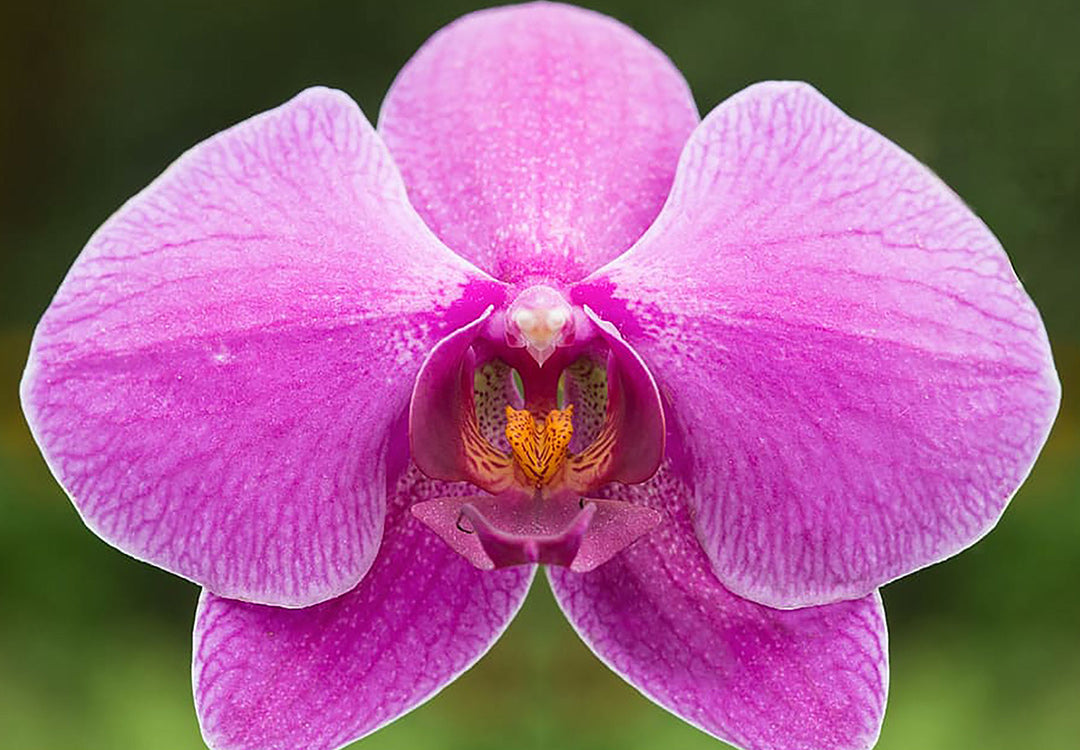
There are few flowers that inspire the type of awe that orchids do. They come in some seriously weird and wacky forms and I’m not quite sure there’s such a thing as an ordinary orchid, unless you’re comparing it against other orchids.
All orchids belong to a single family of monocots, Orchidaceae. You might find members growing in the soil or living as an epiphyte in the crook of a tree.

An epiphyte is a plant that lives in another plant but is not parasitic. Here a culinary vanilla plant Vanilla planifolia is living on a tree. Notice the seed pods which are typical for the orchid family. Image source
Description
They are herbaceous plants with bisexual irregular flower that are usually quite small.
There are two types of branching habit: the first type, monopodial orchids, continue to grow from a single apical shoot.

Monopodial Cymbidium suave with a number of individual stems that will continue to grow. Notice the lower parts of the stem have let older leaves die off as they continue to grow apically (from the tip). Image source
The second type, sympodial orchids, grow a certain amount from a single vertical apical bud before they allow it to die off. They continue to grow new short-lived lateral branches, moving forward along the ground (or other growing medium), one lateral branch at a time.

This is x beallara, a sympodial orchid with a number of lateral branches growing from a rhizomous stem. Image source
You can learn about apical shoots and lateral branches through a post I wrote here.
Flowers, Fruits & Leaves
Tepals: The outer parts of the flower (perianth) can’t easily be classified as either sepals or petals, which defines them as tepals. There is an outer whorl of 3 tepals (sepals) and an inner whorl of 3 tepals (petals). Two upper inner tepals are alike, whereas the lower inner tepal is highly modified and differentiated.
Reproductive: Stamen(s) and pistil unite into a single organ called a column. Members of the Cypripedioideae subfamily have two stamens fused to the column, one on either side of the pistil. The Orchidoideae subfamily members have a single stamen fused to the column, with at least one (often two, or many) waxy pollen masses termed pollina.
Fruit: A capsule that is dehiscent (meaning it is designed to split and unleash the seeds within).
Seeds: Orchid seeds the size of dust particles and just as numerous: sometimes over a million seeds can be held within a single capsule.
Leaves: Generally, leaves are parallel-veined with a sheathed attachment.
Noteworthy Types
Different species have used the orchid flower archetype to come up with some astonishing shapes, some resembling birds, skulls, ballerinas and even hooded monks in prayer.

An incredible flower belonging to the Western Australian native bird orchid Pterostylis barbata. The sepals and petals are fused and modified in such a way as to make them hard to discern, something that can happen with orchids especially. In this case, the labellum (bottom petal) is the feathery tongue (though it looks like a reproductive organ). Image source
It’s very likely that you’ve purchased a member of the Phalaenopsis genus, also known as moth orchids, on a whim. There’s also a good chance that it never again flowered after those blooms present upon purchase died.

A moth orchid Phalaenopsis sp. showing the orchid petal structure: 3 sepals (tepals) at the back, and 3 petals (tepals) at the front. Marvel and wonder at the sorts of evolutionary processes that must have created the bottom petal, or labellum. Image source

Another moth orchid Phalaenopsis sp. up close. Image source
Culinary vanilla Vanilla planifolia is an orchid and its seeds are considered to be the most popular flavour in the world. Which feels about right, if you think about it.

A Vanilla planifolia flower and some immature fruits. Image source
Grammatophyllum speciosum holds the Guinness World Record as the largest orchid in the world with one specimen being measured at a whopping 7.62m.

A giant orchid Grammatophyllum speciosum. Look at the monopodial stems and leaf sheathing, which is typical for the family. Image source
Platystele jungermannioides is the smallest known orchid coming in at just 2.1mm wide. Its flowers are so tiny that the thickness of each petal is just a single cell.

Seriously cute tiny orchid flowers Platystele jungermannioides. Image source
Conclusion
Orchids are so cool and their flowers are so weird and interesting; they could be from another planet, don’t you think?
If you haven’t already read my articles on plant identification and scientific names, I recommend reading those to get a broader picture of the topic. Alternatively, you can browse some of my other plant families, subfamilies and genera below.
